
The Concerts You Never Forget
These campus-area shows have passed into UW–Madison mythology.
Ronnie Wood wasn’t having it.
“We’re not going down there again,” he said.
It was November 3, 1970, in a music club called Dewey’s at 437 W. Gilman Street in Madison.
Several hundred people had packed the club to hear Faces, a new incarnation of the band Small Faces that featured guitarist Wood and lead vocalist Rod Stewart from the Jeff Beck Group. The band was new enough that the poster for the Dewey’s show — advertising tickets for $3.50, $4 at the door — still called it Small Faces.
The band had thrilled the Madison audience, as club owner Duane “Dewey” Weum knew they would. He’d seen them two weeks earlier at the Scene in Milwaukee and came back predicting Stewart would be a top-five superstar. “Rod who?” a friend asked.
Now, after two encores at Dewey’s, the crowd was still on fire, chanting for more. Weum turned to his janitor, Dan Keegan x’72 — who created the show’s poster — and told him to go upstairs and ask the band to play one more song.
Keegan asked, and Wood refused.
Keegan looked at Stewart and pointed to the stairs. “Do you hear that? If you don’t come back down, they’re not going to let you leave.”
Stewart turned to Wood. “Okay, mate, let’s go down and do one more song.”
They did. It was a slow tune that calmed the crowd. Everyone left happy. The next year, Rod Stewart released “Maggie May,” and the world knew his name. Ronnie Wood soon joined the Rolling Stones.
And Keegan, the janitor? Doing the posters at Dewey’s rekindled a dormant interest in art. He became a ceramics artist and one of the country’s top arts administrators, retiring in 2016 as director of the Milwaukee Art Museum.
Across decades, campus-area music clubs have hosted several such legendary performances, recalled years later at alumni gatherings. Often it was because the artists, little known on taking the stage in front of a largely student crowd, subsequently soared to stardom. Alice Cooper played Dewey’s in 1970. U2 played Merlyn’s on State Street in 1981, and Nirvana played to 150 people at Club Underground in 1990.
And on rare occasions the shows live in infamy.
Jimi Hendrix at The Factory
Perhaps best of all are the performances that endure in memory because of the sheer brilliance of the music. Near the top of that list would be Jimi Hendrix at the Factory, 315 W. Gorham Street, on February 27, 1968.
“It was the most amazing thing I’ve ever seen,” says Ken Adamany, who promoted that show and countless others. “I’ve probably met 5,000 people who said they were there.”
The club capacity was 1,500, though Hendrix did play two shows.
There was concern for a time that night whether the show would happen at all. Hendrix was late. Adamany asked a band that often hung at the Factory, Camel Magic from Janesville, Wisconsin, to set up their equipment so Hendrix’s group could immediately take the stage upon arrival.
A friend approached Adamany. “Ken, there’s some English guys knocking on the door of your apartment.” Adamany lived around the corner on Gilman Street, and his home address was on the contract with Hendrix. The band apparently had no idea how to find the club.
When the Hendrix troupe finally got to the Factory, Gerry Stickells — destined for fame himself as a tour manager — looked around and confronted Adamany: “If you don’t get that junky equipment off the stage, we’re going back to the hotel.”
Things got much better from there. Madison musician “Westside Andy” Linderman was in the front row, sitting cross-legged on the floor. “We were all crammed together,” Linderman says. “You couldn’t move.”
He calls the concert itself “amazing.” Hendrix brought a light show from England and added to his matchless guitar with a wah-wah pedal.
Linderman voiced a request, “Red House,” from an album that hadn’t yet had an American release. Hendrix laughed, asking how Linderman knew the song. (He had a Japanese import.) “Then he played a killer version of it,” Linderman says. At one point Hendrix broke a guitar string and tossed it to Linderman.
Between shows, Madison radio personality Jonathan Little interviewed Hendrix backstage and asked about his contribution to the new psychedelic sound.
“It’s just music, man,” Hendrix said.
Alice Cooper at Dewey’s
Of course, rock and roll shows have often been about more than the music.
When Alice Cooper played Dewey’s in November 1970, Keegan, wearing his janitor’s cap, was getting things ready with a broom and mop while the band set up. Cooper approached him.
“Hey, man,” Cooper said. “Can you get me a feather pillow?”
Keegan was puzzled. “A feather pillow?”
“Can you get me one before we start?” Cooper repeated, offering an incentive that was widely partaken of in those days although not strictly legal.
“Let me run home and see if I can find one,” Keegan said.
His apartment was nearby, and he wound up knocking on a neighbor’s door and acquiring a feather pillow.
“I brought it back,” Keegan says. “The band plays. They’re crazy and outrageous and the place is packed. They come back for their encore. In the middle of the number, Cooper pulls out the feather pillow. He also grabbed a large knife. He slices open the feather pillow and at the same time the bass player opens a CO2 canister and blows feathers all over the club.”
Keegan can laugh now. “I got the pillow, and I’m the guy who had to clean it up. I think we were picking feathers out of stuff for months.”
U2 at Merlyn’s
A decade later, one of the hot music clubs in Madison was Merlyn’s at 311 State Street, on the second floor above a gyro shop. On the club’s street-level door was a painting of Merlin the magician.
Madison music historian Dave Benton played in Spooner, which, Benton says, “was kind of Merlyn’s house band.” He describes feeling “a sense of community” at the club.
An Irish band touring the United States for the first time was scheduled to play Merlyn’s in April 1981. U2’s debut album, Boy, was released in 1980.
“I liked the music on their first album,” Benton says. “There was definitely a buzz about them already.”
Benton attended the show and recalls an energetic U2 performance for a good-sized crowd.
The band was young — lead vocalist Bono was 20, drummer Larry Mullen Jr. just 19.
A newly minted lawyer named Russ Feingold ’75 was also at the show. He worked in Foley & Lardner’s Madison office and recalls that the firm “required us in those days to wear a three-piece suit every day. Even in the middle of the summer. We’d walk around like penguins.”
On April 14, 1981, a young colleague at Foley, Steve Shimshak ’72, JD’80, approached Feingold: “There’s a young group from Ireland, they’re supposed to be really good, playing at Merlyn’s.”
“We walked down there together in our three-piece suits,” Feingold says. “And they were terrific. We danced around the mosh pit in our suits.”
The postscript to Feingold’s story came two decades later, when he was in the U.S. Senate and a leader on the issue of HIV/AIDS relief. Bono, a superstar by this time and an AIDS activist, paid a visit to Feingold’s Washington office.
Feingold invited his excited staff into his office at the start of the meeting. And he said, “Bono, 20 years ago I heard you play at a small club in Madison called Merlyn’s.”
Bono, not missing a beat, began riffing on “Sgt. Pepper’s Lonely Hearts Club Band”: “It was 20 years ago today… .”
R.E.M. at Merlyn’s
For Benton, Merlyn’s shows by then-unknown R.E.M. hold even more significance than the U2 performance.
“Nobody knew who they were,” Benton says of R.E.M.’s first Merlyn’s appearance on November 24, 1981. An agent convinced Merlyn’s proprietor, Serge Ledwith, to book them.
“Serge talked them up to me,” Benton says. “When I went to the show, I hadn’t heard their music at all. There were only 35 people there. But I was just knocked off my feet by their songs and their music.”
R.E.M. returned to Madison a few more times before they rocketed to fame in the second half of the 1980s. Band manager Jefferson Holt’s girlfriend was attending UW–Madison, and he and R.E.M. came to a backyard cookout at the Morrison Street home of Benton’s Spooner bandmates Butch Vig ’80 and Duke Erikson.
“That was our chance to slip them some Spooner records,” Benton says.
Nirvana at Club Underground
Vig was also in the nascent stage of a brilliant career as a producer. In spring 1990, the alternative rock band Nirvana came to Madison to work with him at Smart Studios, the E. Washington Avenue recording venue established by Vig and Steve Marker ’89 in 1983.
“Butch wanted to see the band play live in Madison,” says Jim Berkenstadt, “to better inform himself of their style while recording them.”
Berkenstadt is a Madison-based pop music historian known as “the Rock and Roll Detective.” With Charles Cross, he authored the 2003 book Nirvana: Nevermind.
On April 6, 1990, Nirvana played Club Underground, a small venue in the basement of a building at 3 N. Park Street, the corner of Regent and Park. The previous year Nirvana had played O’Cayz Corral on E. Wilson Street.
“The lineup was Kurt Cobain on lead vocals and guitar, Krist Novoselic on bass, and Chad Channing on drums,” Berkenstadt notes. “This version of the band did not yet include the final lineup with Dave Grohl on drums.”
Also on the bill at Club Underground were grunge-punk bands Tad and Victims Family. An advertisement for the show suggested “early arrival.”
In Berkenstadt’s book, Vig recalled the Nirvana performance: “It was a great set, very loose. I remember they were pretty messed up for it.”
While Nirvana recorded several songs at Smart, only one from the Madison sessions — “Polly” — made it onto the band’s breakthrough album, 1991’s Nevermind.
Hole at The Paramount
Four years after the Club Underground show, a band with a deep connection to Nirvana took the stage at the Paramount Music Hall, only a block away. The Paramount — formerly the R&R Station — opened in summer 1994 at 103 N. Park Street and that fall featured a performance by Hole, the punk-pop band fronted by Courtney Love, Kurt Cobain’s widow. The couple married on the beach in Hawaii in 1992, and Cobain had died by suicide earlier in 1994.
The Hole show at the Paramount, on October 22, proved memorable for all the wrong reasons.
“The night unfolded like a Stephen King novel,” Natasha Kassulke MA’93 wrote the following morning in the Wisconsin State Journal.
Kassulke, who now works in communications for UW–Madison, described herself in those days as a “grunge girl.” It was at her urging that the State Journal began reviewing alternative music that was drawing passionate student crowds.
Kassulke was a Hole fan — to this day, she still has the band on her Spotify lineup — and wasn’t about to miss the 1994 show.
From the outset, however, there were problems.
“Love punctuated the first song by screaming at the soundman about a disabled amplifier,” Kassulke wrote. “While he was working on the problem, Love turned her temper on the crowd. ‘Step back,’ she snarled. ‘No, I don’t want to play.’ ”
Recalling the show a quarter-century later, Kassulke says, “She was very angry at the promoter. She was abusive and controlling.” At one point, Love demanded the audience chant a racial epithet; when they refused, she fled the stage.
Love eventually returned. From Kassulke’s story: “For an encore she traded her outfit of lace for a sheer white slip and a deli tray, which she eventually tossed into the crowd while wildly munching on shaved ham.”
Love then dove into the audience, where “someone ripped the slip off her back, leaving her naked from the waist up.” Love pointed to the young man she thought responsible.
“She brought him up on stage and beat him,” Kassulke says. “I’ll never forget it.”
She called the State Journal. “I got the city desk and said, ‘Believe me, this is a big deal. This woman is off her rocker.’ ” The story ran on page one.
Seu Jorge at the Wisconsin Union Theater
In stark contrast to the dark debacle at the Paramount was a 2006 Wisconsin Union Theater performance by Brazilian musician and actor Seu Jorge, a show so upbeat and energetic that Capital Times writer Rob Thomas listed it among his favorites of the decade.
Jorge at that time may have been best known for acting in and recording songs for Wes Anderson’s movie The Life Aquatic with Steve Zissou. He had played on the Memorial Union Terrace in September 2005 as part of the Madison World Music Festival, telling the Chicago Sun-Times that the Madison performance “was the first time I felt my American audience was truly happy for me.”
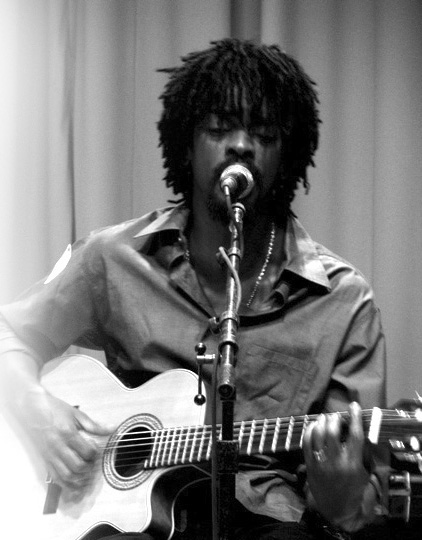
Seu Jorge’s joyous show at the Wisconsin Union Theater erased the boundary between performer and audience. Courtesy of the Wisconsin Union Theater
It may have primed him for his return nine months later, indoors in the 1,300-seat Union Theater. Not that many people were in their seats, as Thomas noted in the lede to his review: “Tuesday would have been an excellent night for the Wisconsin Union Theater to send out its seats for cleaning. Because while hundreds paid for their seats, few actually used them.”
Thomas called the show “a real music festival of different styles and moods.”
Fifteen years later, Thomas recalls, “At Wisconsin Union Theater shows, people were generally sitting and enjoying the music. What was so striking to me was that everyone was dancing. It was like a procession going through the aisles, and the barrier between the performers and the audience was totally erased.
“It was like a big party. I was blown away by it and felt honored to be there. Joyful was the word for it.”
Lizzo at the Sylvee
In fall 2017, rapper/singer Lizzo played Shannon Hall in the Memorial Union. The seating capacity was listed as 100-plus and tickets for students were $14.
But the Union knew something: its preshow publicity called Lizzo an “up-and-coming superstar” whose verve and “unapologetic stage presence” was inspiring countless women.
Just two years later, Lizzo played to 20,000 people in Madison Square Garden.
In between Shannon Hall and Madison Square Garden was Lizzo’s October 10, 2019, sold-out performance at the Sylvee in Madison.
The Capital Times called the Sylvee performance a “magical night,” adding that Lizzo’s message of loving yourself for who you are “resonated deeply with the predominately female crowd.”
If you have favorite musical memories from your time at UW–Madison, please tell us about them. Email us at onwisconsin@uwalumni.com, or write to On Wisconsin, 1848 University Avenue, Madison, WI, 53726.
Nobody felt it more than UW–Madison’s Sami Schalk, an associate professor of gender and women’s studies who wound up — thrilled and disbelieving — sharing the stage with Lizzo (see Spring 2020 “Conversation”).
A week earlier, Schalk had tweeted a video of herself dancing and pining for a chance to twerk with the star onstage.
“Half-joking, half-hoping,” Schalk says.
She got to the show early and stood in the second row. About halfway in, when Lizzo said, “I heard there’s somebody here who wants to twerk with me,” Schalk began jumping up and down: “It’s me!”
A security guard led her to the back and then onstage. She twerked with Lizzo.
“The show was great,” Schalk says. “Her music is about self-empowerment, self-love, being your full self.”
It was a night to remember — forever. Indeed, there have been many such nights, on and near campus, across decades. For generations of UW students, these musical memories live on. •
Doug Moe ’79 is a Madison journalist and author who recently collaborated with former Wisconsin governor Tommy Thompson ’63, JD’66 on his autobiography, Tommy: My Journey of a Lifetime.
Published in the Spring 2021 issue
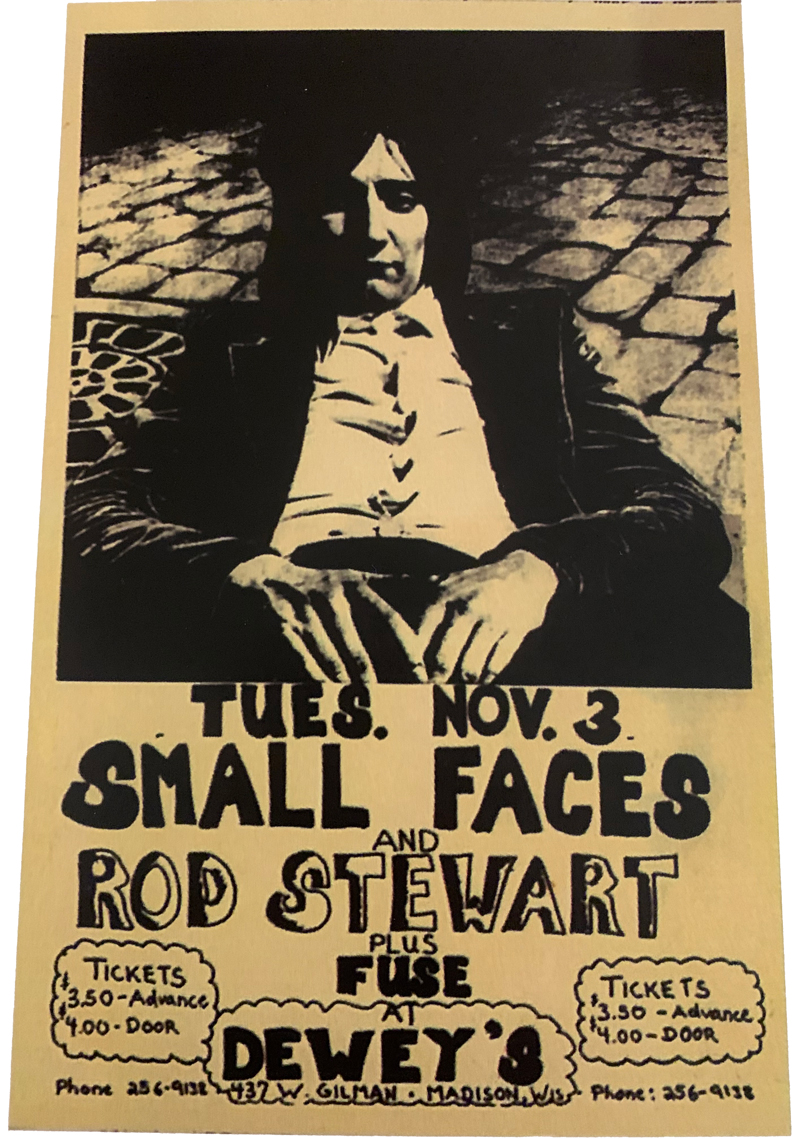

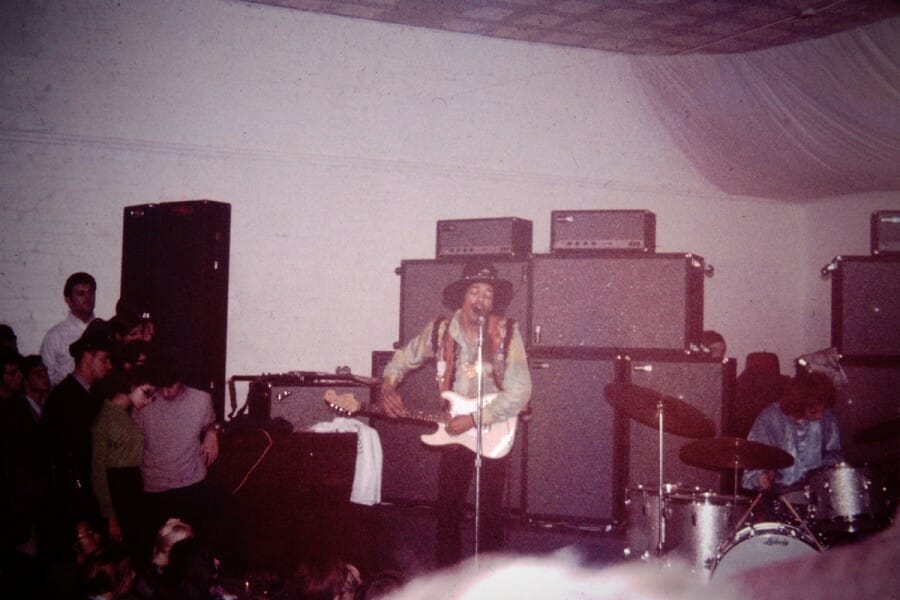
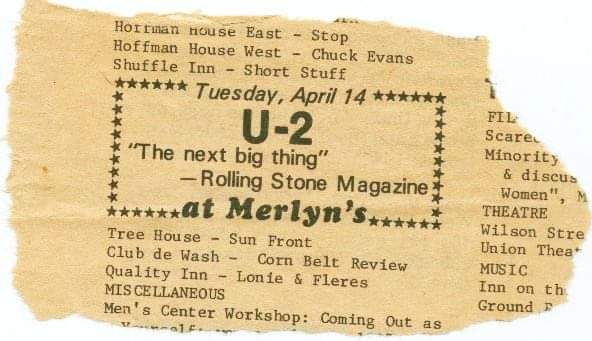
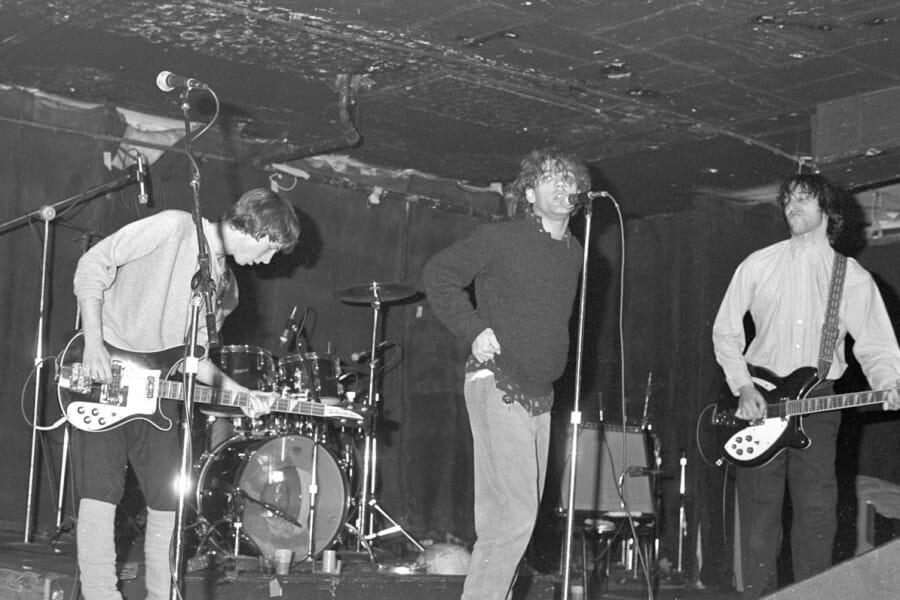
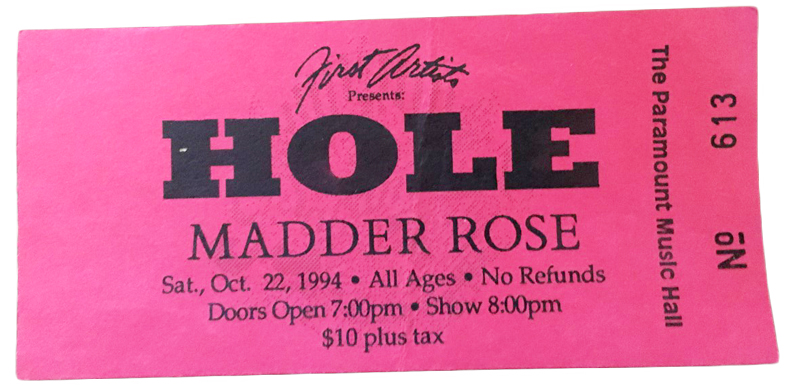
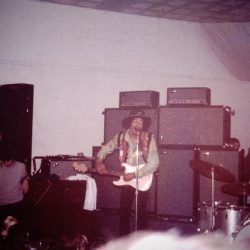
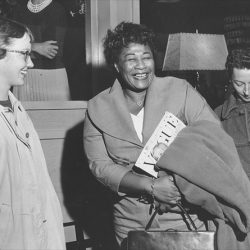
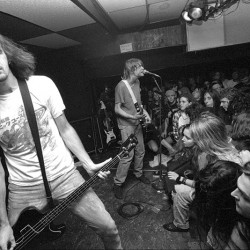
Comments
Kristin Erickson February 11, 2022
Fabulous story! I have no doubt everyone who reads this is thinking, “The weather’s insignificant. Wish we’d been there.”
Steven Patrick Ibach March 29, 2022
Jimi Hendrix did not bring the light show The Factory from England. That light show was always there. I was one of the people running it the night he played there.
Thomas Lee March 30, 2022
I believe that either Simon & Garfunkel or Peter, Paul, and Mary performed in the late 1960s at the Dane County Coliseum and afterward went over to a church basement across State Street from the old KK for a spontaneous, free jam session. Also, I vaguely recall some other group doing something similar in the basement of the First Congregational Church.
dmark February 22, 2023
I was at both the U2 and REM shows at Merlyns. Fantastic memories. I won’t go into how Deweys was run out of business because all the players are dead, but it was a sad part of Madison history.
James Meinberg September 27, 2023
I go way back to the early Fifties. We had a program on homecoming in the Fielld House and the band we saw was Sauter Finigan. They gave a great program. I think the year was 1955.
Joan Jacobson September 29, 2023
Sonny and Cher performed at the Orpheum in the late 60’s. It was early in their career…….well before the glitz years and TV show…….at the time although so talented they looked like an unlikely couple!
Tom Smart September 29, 2023
I was in the UW Jazz Ensemble in 1972. Maynard Ferguson and his band came to do a concert at the UW Stock Pavilion in October. They sent the music for five of their songs to us in advance to rehearse and we performed those numbers with his band on stage. Definitely a highlight of my time at UW Madison! I was also in the Marching and Varsity Bands and remember doing the first Varsity Band concert in Mills Hall in 1975. Mike Leckrone was not sure people would want to come see a pep band give a concert. How it grew after that!
Brian V. Mann September 29, 2023
Man, when Iggy Pop played Merlyn’s it was a dangerous event. I recall even back in the early 80’s several people being shot outside. We never went down there again.
Peter Christianson September 29, 2023
Wrong not to include the Steve Miller Band in Shannon Hall at Homecoming a few years ago. Maybe the most amazing concert I have ever attended. He nearly blew the roof off! Bring him back!
Richard Finke September 29, 2023
I was at the Military Ball in 1948 where Tex Benneke and the Glen Miller orchestra played . Most of the male students came in their Dress uniforms—I came in my tux (tails) as I was a freshman and in ROTC and thought my cadet uniform out of place with the vets and their medals! Dick Finke BSME ‘52.
Brian McGonigle September 30, 2023
I know my story isn’t technically a concert, but I was lucky enough to see George Carlin in the early 80’s at the Union theater. During his performance a heckler kept interrupting the show. Finally, Carlin, stopped his act, and asked the man to stand up. He then asked for a spotlight to illuminate this person, because “I like to see whom I’m talking to.” What transpired was a funny takedown of this idiot, and Carlin made him the star of the show. Good times indeed!
Bonnie E Clark September 30, 2023
Two concerts come to mind – Billy Joel at the Stock Pavilion in 1978 (?) and Bruce Springsteen at the Dane County Coliseum in the fall of 1978. Wow! Both blew me away! Both are nearing the end of their careers, but happy to say I was there at the beginning!
Dick Haines October 2, 2023
You forgot to mention The Who at the Dane County Coliseum in 1977?
Doug Lindquist October 3, 2023
I enjoyed a concert by a young James Brown at the Orpheum in 1967(?) Won free tickets from the WSJ by submitting my reason in 10 words or less – ” My girlfriend will kill me if I don’t win tickets”
Mark December 19, 2023
Does anyone know the capacity for the R&R Station? I saw Smashing Pumpkins there the year after Pearl Jam played, along with countless other bands you’ve never heard of…
glenn lambright April 29, 2024
Yup Hendrix @ the factory, “68 looked @ Jimi eye to eye, while playing pinball, as they returned from break. Still get a helluva rush.
Colosseum, was a top draw venue WorldWide, w Santana, Sringsteen,Johnny Cash,Who,James Brown, Ray Charles ect.ect.ect.
Stray Cats ,on State St,and many,many more !!!
Rick May 8, 2024
July 12, 1981. Van Halen Dane County Coliseum
Setlist:
On Fire
Sinner’s Swing!
Hear About It Later
So This Is Love?
Jamie’s Cryin
Runnin’ With the Devil
Dance the Night Away
Sunday Afternoon in the Park
Romeo Delight
Everybody Wants Some!!
Ice Cream Man
Mean Street
Feel Your Love Tonight
You Really Got Me
Encore:
Unchained
Ain’t Talkin’ ’bout Love
Southside Eddie February 15, 2025
Good memories of Snoopy’s on Park Street.
John Lee Hooker and Canned Heat,Johnny Winter, Mason Profit. ETC.
Local bands Oz, Tayles, Bowery Boys, always made the trip worthwhile. Back in 71.
Joy February 24, 2025
Does anyone remember when Return to Forever played in Milwaukee concert hall in the 1970’s? It would be around 1973 to 1975? Thanks!
Richard C. March 24, 2025
When in high school at Central high I seen Ray Charles, Johnny Cash and Johnny Mathis all at orpheum theater 1961 1962.